Daylilies - care in the fall and preparation for winter
It is difficult to find a flower bed in a summer cottage where there are no daylilies. These flowers have gained immense popularity among flower growers of all countries due to their beauty, variety and unpretentiousness. However, even they need, albeit minimal, but proper care in the fall and preparation for winter.
Note! Daylilies are not a lily bed or its second name, but a completely separate genus of plants (not bulbous, like a lily, but rhizome). Don't be confused!

Content
What to do with daylilies in fall and during winter preparation
So, among the main autumn activities for preparing daylilies for winter are the following:
- removal of faded peduncles (so that the plant does not waste energy on seed ripening);
- transplant (division and seating);
- top dressing (as desired and necessary, if you want to improve flowering for next year);
Autumn fertilization, i.e. potassium-phosphorus.

- trimming leaves (recommended for everyone);
- mulching and / or shelter (only in cold and snowless regions).
Yes, everything is so simple, and it won't take long.

Transplanting daylilies after flowering
After the daylilies have faded (around August), it's time to divide and transplant them.
Interesting! Although daylilies are often transplanted in the spring - in April.
How to divide and plant daylilies after flowering:
- Prune foliage (or do it after planting).
In order for the plant to take root faster and better in a new place, it should not expend extra precious energy on the green mass, therefore, the above-ground part is always shortened.
- Dig in the bushes around the perimeter and get them out of the ground.
- Divide into several parts, as a rule, into 2-3 large ones or into separate divisions.
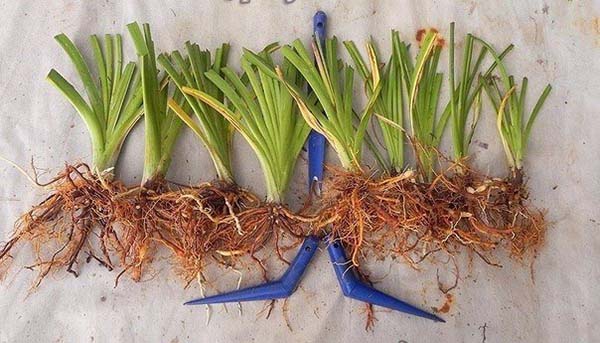
- Choose a new landing site (optimally sunny).
- Prepare the planting pit (mix the garden soil with humus or compost, potassium fertilizer, for example, potassium sulfate).
- Water, let the moisture soak in and place the delenka in the center of the pit.
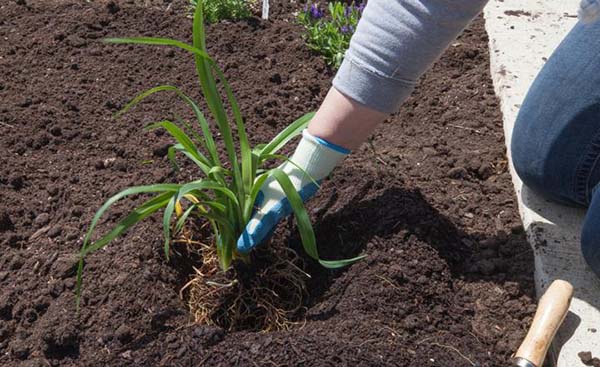
- Cover it with earth, water it again, let it soak in, and add the soil again.
Video: how to grow and propagate daylilies (divide and transplant)
Pruning daylily in autumn
Perhaps the autumn pruning of dead foliage is the only recommended activity that should be followed by everyone when preparing daylilies for winter.
Why prune daylilies in the fall
Daylilies are pruned in the fall for the following purposes:
- To prevent possible decay of foliage (in late autumn - early winter and early spring during thaws), which can provoke root rot.
- Pruning is good prevention of diseases and pestssince together with the cut leaves, you take out pathogens and pest larvae from the bush.
When to prune daylilies in autumn: optimal timing
It is necessary to cut daylilies on the eve of stable subzero temperatures or immediately after their establishment. Depending on the climate in your region, the right time is October-November.
Important! Do not prune daylilies in the fall ahead of time. The fact is that too early pruning can provoke the growth of the aerial part of the plant - the appearance of new leaves.
How to properly prune daylilies for the winter
There is nothing difficult in pruning daylilies in autumn:
- Use a sharp pruner to cut off all the leaves at a height of 10-15 cm from the ground.
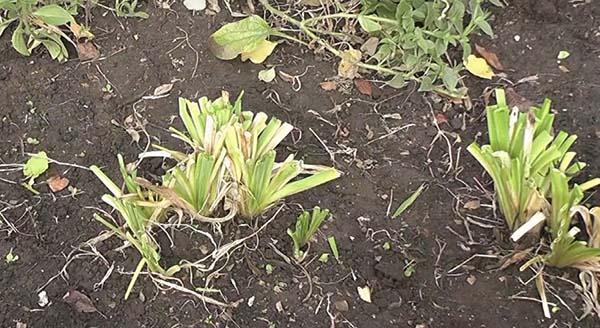
Important! Just do not cut it too short (i.e. without leaving any stumps at the root), because this can provoke the plant to resume growth during periods of thaw.
- Further, all the trimmed foliage must be raked and taken to the compost heap, or taken out of the site and burned (if the leaves are severely affected by diseases and pests).
Shelter daylilies for the winter
Do I need to cover daylilies for the winter
Most of the perennial flowers need to be covered for the winter, however, daylilies belong to plants with high winter hardiness, so there is no shelter for them, usually not required... Moreover, if there are snowy winters in your region, because snow is the best shelter for many perennials.
However, if the climate of your growing region is characterized by lingering severe frosts and snow rarely falls, then it is still worth insulating daylilies, all the more, if they were planted this fall, because they have not yet had time to get strong and adapt to new environmental conditions and can freeze out.
How to properly cover daylilies for the winter
Most often, it will be quite enough to mulch your daylilies with a layer of mulch 5-8 cm, which can be used as straw, dry leaves, rotted sawdust.
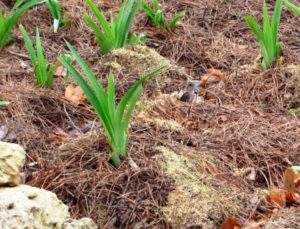
If more serious insulation is required, then spruce branches can be put on top of the mulch or even daylilies can be covered with non-woven covering material.
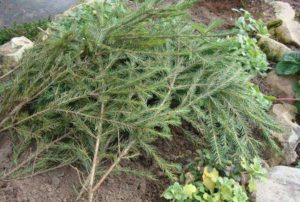
Thus, now you know that daylilies are a rather unpretentious and winter-hardy flower culture, but she still needs some preparation for wintering. Of course, you can let things take their course and not take care of the flowers in the fall at all, but you love your daylilies and do not want anything to happen to them.
Video: how to prepare daylilies for winter

